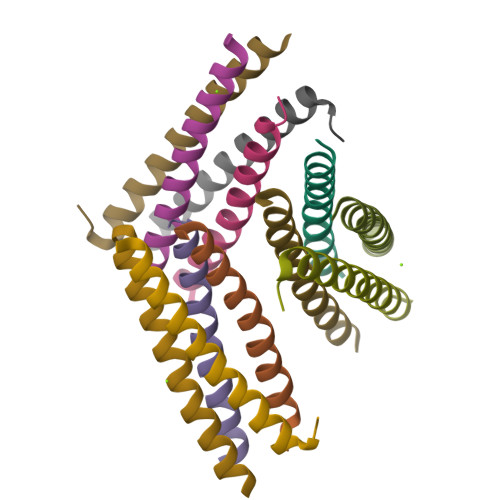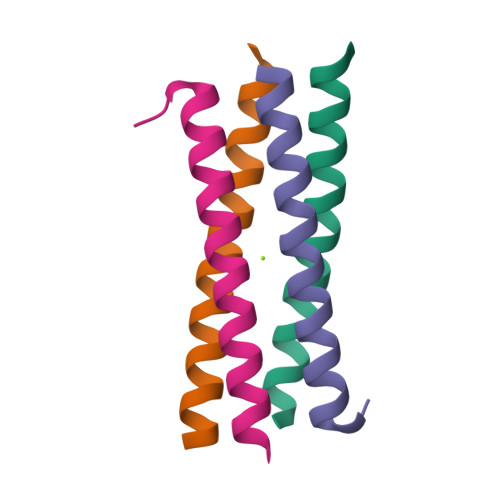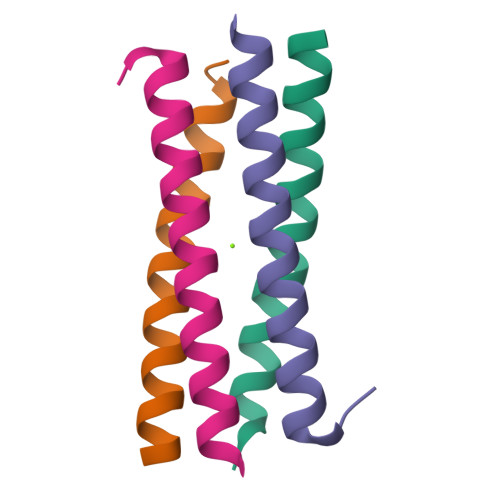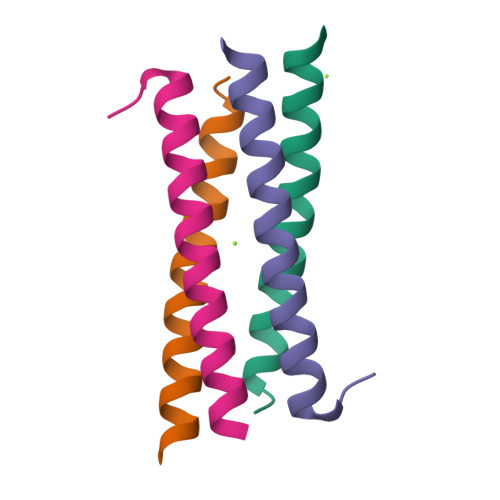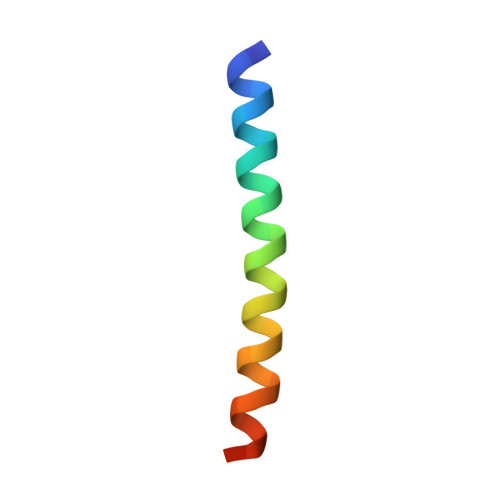A heterospecific leucine zipper tetramer.
Deng, Y., Liu, J., Zheng, Q., Li, Q., Kallenbach, N.R., Lu, M.(2008) Chem Biol 15: 908-919
- PubMed: 18804028
- DOI: https://doi.org/10.1016/j.chembiol.2008.07.008
- Primary Citation of Related Structures:
3CK4, 3CRP - PubMed Abstract:
Protein-protein interactions play an essential role in the assembly of the macromolecular complexes that form functional networks and control cellular behavior. Elucidating principles of molecular recognition governing potentially complex interfaces is a challenging goal for structural and systems biology. Extensive studies of alpha-helical coiled coils have provided fundamental insight into the determinants of one seemingly tractable class of oligomeric protein interfaces. We report here that two different valine-containing mutants of the GCN4 leucine zipper that fold individually as four-stranded coiled coils associate preferentially in mixtures to form an antiparallel, heterotetrameric structure. X-ray crystallographic analysis reveals that the coinciding hydrophobic interfaces of the hetero- and homotetramers differ in detail, thereby controlling their partnering and structural specificity. Equilibrium disulfide exchange and thermal denaturation experiments show that the 50-fold preference for heterospecificity is determined by interfacial van der Waals interactions and hydrophobicity. Parallel studies of two alanine-containing variants confirm the above-mentioned interpretation of the basis and mechanism of this heterospecificity. Our results suggest that coiled-coil recognition is an inherently geometric process in which heterotypic interaction specificity derives from a complementarity of both shape and chemistry.
Organizational Affiliation:
Department of Biochemistry, Weill Medical College of Cornell University, New York, NY 10021, USA.








